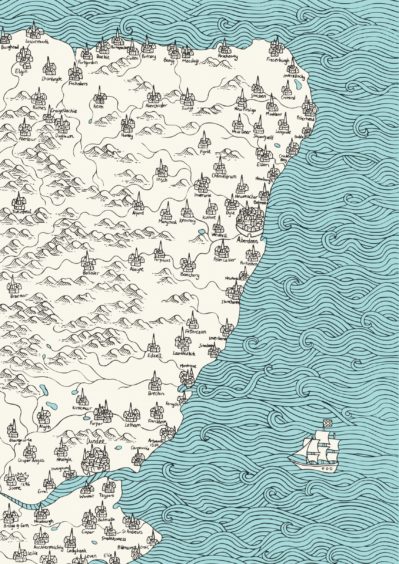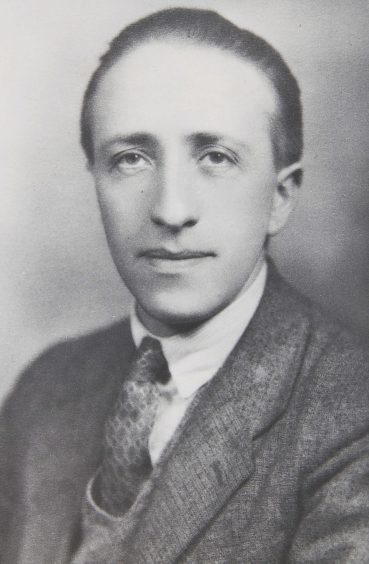An acclaimed Scottish artist has started work on a project to create a comprehensive new atlas of his homeland – the first such venture to be carried out in 100 years.
Andrew Barr told the Press and Journal that he wants to record not just the place names and geographical locations of the country, but also catalogue the special qualities which are found in different parts of Scotland.
He is striving to produce a visually striking hardback book, combining text with illustrated maps and hopes his atlas will shed new light on Scotland’s size and resources, its cultural and political history and richness of its international connections.
He said: “Modern technology may have replaced traditional paper atlases, but I believe there is still something valuable about being able to see a whole vision of a country, laid out and illuminated on paper.
“By returning to map-making in pen and ink, and by retelling the story of Scotland’s history and culture, this new atlas aims to be a reflection of where Scotland stands today, as well as revealing one of the world’s oldest nations in a whole new light.
“Atlases throughout history have been a snapshot of the times and circumstances in which they are made, and the dreams and visions of the nations that make them.
“This work is meant as a rediscovery, an illumination of a country that is simultaneously growing in confidence and self-belief.”
A crowdfunder for the initiative was launched at the end of September and reached its £12,000 target in just four days, attracting support from all over the world.
Mr Barr has confirmed the work should be ready for publication next autumn.
He added: “The finished atlas will give a detailed overview of the whole of Scotland, but also aims to delve deeper into the make-up of individual regions, towns and cities.
“The north east, for instance, is a fascinating part of the country to draw because the coastline is relatively smooth compared to the complex islands and inlets in the west.
“When you lay out the towns and villages here, you can see how that smooth line has shaped and defined the whole North East region, with the largest settlements being built right onto the sea. You can almost see how the towns have sprung up around particular industries.
“This region is also a rich stronghold of Scotland’s linguistic and cultural history, with a large presence of Scots being spoken, but also many place names of Gaelic origin.
“It is an area of many notable writers, novelists and poets, such as Marion Angus, Violet Jacob, Nan Shepherd and Lewis Grassic Gibbon.
“Then you also have a whole timeline of the Picts, the Wars of Independence, the Jacobite Rebellions, old trading links with Europe and so much more.
“Many important and iconic aspects of Scotland’s story seem to come together in this region, and I can’t wait to explore it further in the new atlas.”
In 2019, he launched his second book, The Illustrated Declaration of Arbroath, at the National Records of Scotland in Edinburgh.
It was designed to be a creative and accessible celebration of the Declaration of Arbroath in the run-up to the document’s 700th anniversary in April 2020.


